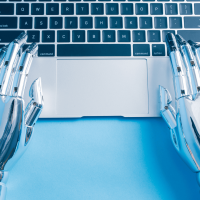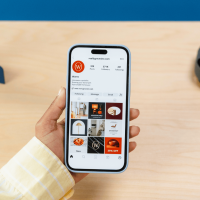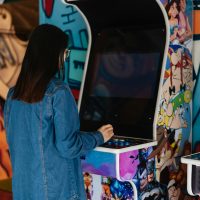What makes a web app not just functional, but unforgettable?
We’ve all used web apps that work—but do they wow? From social media platforms and project management tools to eCommerce sites and design software, we often encounter two kinds of experiences: ones that simply function and ones that feel like magic. That magical feeling results from something deeper than clean code or clever UX—it’s the harmonious marriage between creativity and technical execution.
In the modern web development ecosystem, building something that works is no longer enough. The bar has been raised. Users demand speed, interactivity, visual delight, and personalization. To meet these rising expectations, developers and designers must work not in silos, but in sync. Aligning code with creativity has become the secret sauce behind the world’s most successful web apps.
This article explores how aligning code with creativity fosters innovation, enhances user experiences, and leads to more robust, adaptable, and compelling web applications.
1. The Divide: Code vs. Creativity?
For decades, a silent divide has existed between developers and designers. Developers are often viewed as logical, technical problem-solvers, while designers are seen as imaginative, aesthetic dreamers. This stereotype, though sometimes tongue-in-cheek, has created a workflow that treats development and design as two separate processes. But real innovation lives at their intersection.
In many teams, the process looks something like this:
- The designer creates mockups in tools like Figma or Sketch.
- Developers then “translate” those designs into code.
- Along the way, compromises are made. Ideas are lost. The original vision is diluted.
This waterfall model restricts creativity and limits the potential of the final product. But what if we treated development and design as two sides of the same creative coin?
2. Why Alignment Matters
When code and creativity are aligned from the beginning, the result isn’t just a prettier interface—it’s a better product overall. Here’s why alignment is so crucial:
a. Faster Iteration
When designers and developers collaborate in real time, feedback loops shrink. Creative ideas can be prototyped, tested, and iterated quickly. Tools like Figma (for design) and Storybook (for component development) allow for shared understanding and fast experimentation.
b. Improved Consistency
UI inconsistencies are one of the most common UX pitfalls. By integrating design systems and shared component libraries, both designers and developers can work from a single source of truth. This ensures that the product looks and behaves consistently across pages and devices.
c. Enhanced Innovation
Creative ideas often require complex coding. Likewise, innovative technologies can inspire new design paradigms. When designers understand technical constraints and developers appreciate design thinking, both sides can push boundaries together.
3. Strategies for Aligning Code with Creativity
So, how can teams bridge the gap and create synergy between design and development? Here are proven strategies:
a. Collaborative Design-to-Development Tools
The rise of design and dev tools like Figma, Adobe XD, DhiWise, and Zeplin has revolutionized design handoff. Platforms like DhiWise go further by generating clean code from design files, reducing manual work and preserving creative intent.
These tools allow developers to access design tokens, spacing systems, color palettes, and even component logic directly—making it easier to stay faithful to the original vision.
b. Unified Design Systems
A design system is more than just a style guide. It’s a comprehensive toolkit of reusable components, patterns, and principles. Companies like Google (Material Design) and Shopify (Polaris) use design systems to maintain consistency across vast product ecosystems.
By building and maintaining a shared design system, designers and developers ensure that everyone speaks the same visual and functional language.
c. Cross-Functional Teams
Tear down the silos. Form cross-functional teams that include developers, designers, and product managers from day one. Encourage joint brainstorming sessions, co-creation workshops, and pair programming.
When developers are involved in design discussions, they can provide technical feasibility insights early. Likewise, designers can suggest UI/UX improvements during development.
d. Embrace Prototyping
Prototyping isn’t just for design testing—it’s a creative collaboration tool. Interactive prototypes let developers understand how a feature is supposed to feel, not just how it looks. Tools like Framer, InVision, and Figma’s interactive components help convey motion, transitions, and user flows more vividly than static screens.
e. Adopt Component-Driven Development
Modern front-end frameworks like React, Vue, and Svelte promote component-driven architectures. When developers build reusable components that match design specs, it creates a scalable and maintainable system.
Libraries like React MUI or Tailwind UI provide pre-built components that developers can customize to meet both creative and functional needs.
4. Case Studies: Code + Creativity in Action
a. Airbnb
Airbnb is a textbook example of aligning design with development. They created a React-based design system called “DLS” (Design Language System), which ensured visual and behavioral consistency. By investing in tooling that synced Figma with React components, they reduced design debt and accelerated product development.
b. Spotify
Spotify’s sleek, intuitive interface didn’t happen by accident. Their squads (cross-functional teams) collaborate closely, blending technical excellence with user-centric design. Their internal tools let developers prototype rapidly and test experimental features without risking live code.
c. Shopify
Shopify’s design system Polaris, is not just a visual guide—it’s a philosophy that permeates both code and creativity. They even encourage app developers on their platform to adopt the same system for a cohesive user experience across third-party apps.
5. The Rise of Developer-Designers
A new breed of professionals is emerging: the developer-designer hybrid. These individuals understand both worlds, bridging the gap and speeding up innovation. Whether they started as designers who learned to code, or developers who honed their design sensibilities, they play a pivotal role in modern teams.
For example, a developer-designer might use DhiWise’s Figma to Next.js integration to go from visual concept to deployable code in minutes rather than days. This kind of velocity isn’t just impressive—it’s a competitive edge.
In fact, a growing movement known as Vibe Coding embraces this holistic approach—developers don’t just write logic but infuse their code with rhythm, aesthetics, and intuition. It’s where artistry and engineering become one.
6. Challenges and How to Overcome Them
Of course, aligning code with creativity isn’t always smooth sailing. Some common challenges include:
a. Communication Gaps
Designers and developers often use different terminology. A “card” to a designer might mean something different to a developer. The solution? Shared vocabulary, documentation, and regular alignment meetings.
b. Tool Fragmentation
Not all tools integrate well. Using too many platforms can cause version control issues and inefficiencies. Standardize tools and workflows across teams.
c. Resistance to Change
Some teams may be hesitant to change established workflows. Overcome this with small, demonstrable wins. Start by introducing collaborative tools on a single project and measure the outcomes.
7. The Future: AI, Automation, and Co-Creation
As AI and automation evolve, the line between design and development will blur even further. Tools like DhiWise use Agentic AI to translate design files into production-ready code, generate CRUD operations, and even automate app deployment.
Imagine a future where:
- A designer sketches an interface in Figma.
- AI understands the user flow and generates the front-end and back-end code.
- Developers customize logic and connect APIs in minutes.
- Designers review the result in real time, adjusting animations or interactions without needing to code.
This isn’t sci-fi—it’s already happening. But rather than replacing developers or designers, AI will act as a co-pilot, freeing them from repetitive tasks and allowing more room for innovation and creativity.
Bringing It All Together: Where Logic Meets Imagination
The best web apps don’t just work—they inspire. They reflect a deep alignment between logic, imagination, and pixel and performance. As users become more discerning and technology becomes more powerful, the ability to align code with creativity is no longer optional—it’s essential.
Whether you’re a developer eager to break into the design world, a designer learning to code, or a team lead seeking better collaboration, remember this: Great digital products are built not at the intersection of roles, but at the intersection of ideas.
So, ask yourself how your next web app can better align code with creativity?

Founder Dinis Guarda
IntelligentHQ Your New Business Network.
IntelligentHQ is a Business network and an expert source for finance, capital markets and intelligence for thousands of global business professionals, startups, and companies.
We exist at the point of intersection between technology, social media, finance and innovation.
IntelligentHQ leverages innovation and scale of social digital technology, analytics, news, and distribution to create an unparalleled, full digital medium and social business networks spectrum.
IntelligentHQ is working hard, to become a trusted, and indispensable source of business news and analytics, within financial services and its associated supply chains and ecosystems










